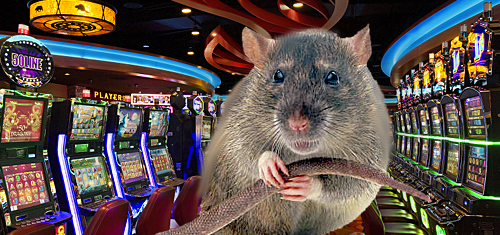 A new study demonstrates that audio-visual stimuli can influence riskier gambling choices, at least, in rats.
A new study demonstrates that audio-visual stimuli can influence riskier gambling choices, at least, in rats.
Researchers at the University of British Columbia (UBC) say they managed to convince rats to make riskier choices after adding light and sound cues to a ‘rat casino.’ The research, published in the Journal of Neuroscience, also showed that the administration of dopamine receptors was able to correct this behavior, suggesting possible future treatments for problem gamblers.
For a few years now, the UBC researchers have been running their ‘rat casino,’ which features a slot machine-style device that enables rats to win a variable number of sugar pellets with the pull of a lever. Some levers return a greater number of pellets when they do pay out, but most of the time they don’t pay out anything while imposing a ‘time out’ on the use of any lever. Most of the rat gamblers learn to avoid these options in favor of the low-risk, low-reward levers.
For their latest study, the researchers added light and sound cues, with the larger payouts accompanied by a corresponding rise in audio-visual stimuli. The flashy lights and sounds had the effect of causing the rats to more often choose the high-risk, high-reward options.
The study describes the frequency of riskier choices by the stimulated group as “significantly greater” while associate professor Catharine Winstanley opted for the less clinical term “enormous.” Winstanley added that she didn’t think it was an accident that human brick-and-mortar casinos are “filled with lights and noise.”
The researchers then gave the rats a drug that blocked a type of dopamine receptor linked to addictive behavior, which restored the stimuli-cued rats to their previous play-it-safe choice patterns. The dopamine blockers had minimal effect on the control group of rats, who gambled without the audio-visual cues.
Michael Barrus, lead author of the study, said the brain receptor in question had a strong link with drug addiction, which suggests that “risky behavior across different vices might have a common biological cause.”
